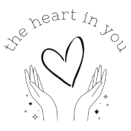We all experience moments where we feel completely overwhelmed, frustrated, or caught in a cycle of challenges. But have you ever stopped to ask yourself: Why do I feel this way?
It’s easy to blame the circumstances around us— the stressful work project, the difficult conversation, or the ongoing frustration with our personal life. But what if I told you that the real source of the stress isn’t the situation itself, but the way we respond to it?
Our automatic reactions to life’s challenges are often what reinforce the patterns that keep us stuck. This is the subtle, unseen force behind recurring feelings of frustration, overwhelm, or even anger. Our reactions are often so ingrained that we don’t even notice them until we’re deep in the emotion. But what if, instead of reacting automatically, you could choose your response?
Understanding Our Reactions: Why We Keep Repeating, Even When It Isn’t Working
In any given situation, our brain pulls from past experiences and emotional memories to create a response. These automatic responses are often shaped by long-standing emotional patterns. If you’ve ever felt like you’re “stuck” in the same frustration or confusion over and over again, it’s likely that these reactions have become habitual.
Here’s the catch: we often confuse our reactions with the problem. We believe that the stressful situation is causing us to feel frustrated or overwhelmed, when in reality, it’s our reaction to it that’s fueling the cycle.
Imagine you’re in a meeting at work, and someone criticizes your idea. Your automatic reaction might be defensiveness, anger, or self-doubt. The moment that reaction kicks in, the emotional pattern is triggered, and you’re back in the cycle. This pattern of response might have formed years ago, and it’s been operating beneath the surface without your conscious awareness.
The Hidden Power of Awareness
This is where the true transformation lies—in awareness. Becoming aware of your automatic reactions gives you the power to interrupt the pattern and choose a different response. Rather than reacting from a place of old programming, you can respond consciously, with clarity, and from a place of calm.
By simply noticing how you feel in real-time, you can choose a new direction. In that meeting, instead of instantly reacting with defensiveness, you could pause and choose to respond with curiosity or openness. This small shift can create a ripple effect, slowly unraveling old patterns of frustration or overwhelm.
A Simple Practice for Noticing Reactions
Here’s a simple practice to help you become more aware of your automatic reactions and start shifting them:
- Pause and Breathe: The next time you feel a strong emotion arise (frustration, anger, anxiety), pause and take three deep breaths. This will give you a moment to step back from the automatic response.
- Observe the Emotion: Instead of immediately labeling the emotion as “bad” or “wrong,” just observe it. What physical sensations are connected to the emotion? Where in your body do you feel it?
- Ask the Question: “Is this reaction based on what’s happening now, or is this an old pattern?” Allow the answer to come naturally.
- Choose Your Response: After taking a moment to breathe and reflect, decide how you want to respond. Is there another perspective you could take? A more grounded, empowered response?
Journal Prompts for Deeper Awareness
- Think of a recent situation that triggered a strong emotional reaction. How did you respond? What patterns do you notice in how you typically react to similar situations?
- Are there any emotional patterns you find yourself repeating, especially when life feels stressful or chaotic? Write them down.
- What might it look like to choose a different reaction the next time you’re triggered?


